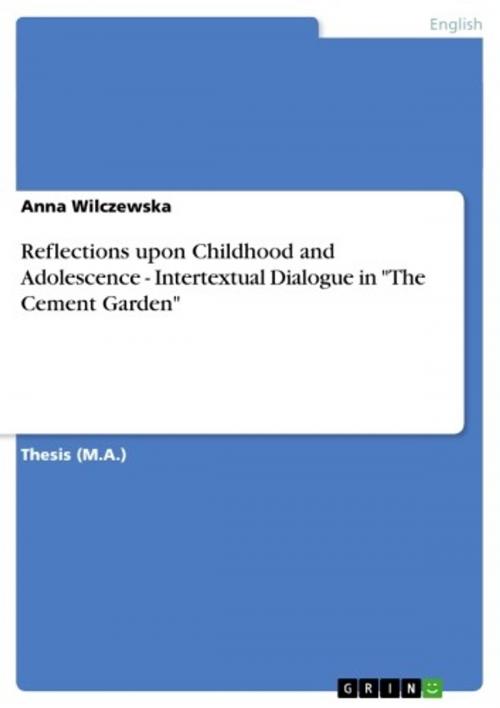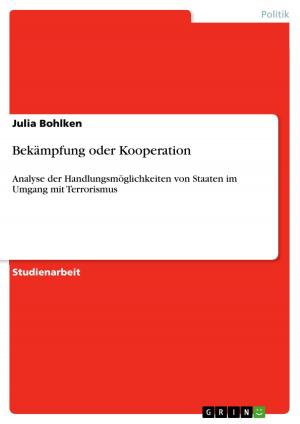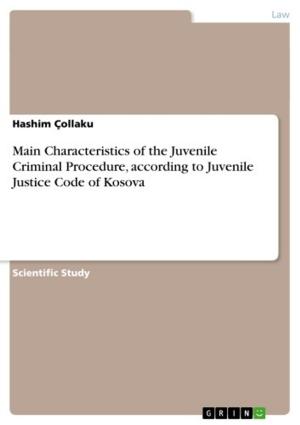Reflections upon Childhood and Adolescence - Intertextual Dialogue in 'The Cement Garden'
Fiction & Literature, Literary Theory & Criticism, British| Author: | Anna Wilczewska | ISBN: | 9783656393733 |
| Publisher: | GRIN Verlag | Publication: | March 19, 2013 |
| Imprint: | GRIN Verlag | Language: | English |
| Author: | Anna Wilczewska |
| ISBN: | 9783656393733 |
| Publisher: | GRIN Verlag |
| Publication: | March 19, 2013 |
| Imprint: | GRIN Verlag |
| Language: | English |
Thesis (M.A.) from the year 2011 in the subject English Language and Literature Studies - Literature, University of Gdansk, course: British literature, intertextuality, language: English, abstract: Within the full spectrum of various literary theories offered by modern criticism, the theory of intertextuality deserves a particular attention. This ambitious concept, proposed by Julia Kristeva in the 1960's, shed new light on the understanding and approach to a literary text. Influenced by Bakhtin's theory of dialogism, the French scholar suggested a new model of communication which consists of two axes: horizontal, involving communication between subject and addressee, and vertical which is in an interaction between a text and a context. The two axes, as she claimed, coincide which stresses the fact that 'each word (text) is an intersection of word (texts) where at least one other word (text) can be read' (Kristeva in: Allen: 2000, 39). She further drew a conclusion that 'any text is constructed like a mosaic of quotations; any text is the absorption and transformation of another' (Kristeva in: Allen: 2000, 39). Consequently, we can assume that any literary text does not exist on its own, but is rather in various ways linked with other literary texts. Barthes further develops Kristeva's original concept and states that: [...] a text is [...] a multidimensional space in which a variety of writings, none of them original, blend and clash. Text is a tissue of quotations drawn from innumerable centuries of culture [...] (Barthes in Allen: 2000, 13). The text exists only in respect to other, prior literary texts, called intertexts, with which the new text enters into a discourse. Literary plots, genres, stylistic devices, different cultural symbols and images, methods of narration and many other aspects of a literary work already existing in the literary tradition become a part of new text. (Allen: 2000,11) In this way a new literary text is always enriched by its intertexts which complement the new text and shape its meaning. Intertextuality, thus, can be understood as a study of those aspects of a literary work which indicate a great dependence of both creation and reception of a given text on the whole network of the literary tradition (Nycz: 1995, 62 ). Another important facet of the theory of intertextuality is strictly connected with an active role of the reader. As 'the act of reading plunges us into a network of textual relations' (Allen: 2000, 1), a considerable competence of the reader is required. In order to grasp a full potential of the text, the readers should be aware of the rich literary discourse which takes place in the text. [...]
Thesis (M.A.) from the year 2011 in the subject English Language and Literature Studies - Literature, University of Gdansk, course: British literature, intertextuality, language: English, abstract: Within the full spectrum of various literary theories offered by modern criticism, the theory of intertextuality deserves a particular attention. This ambitious concept, proposed by Julia Kristeva in the 1960's, shed new light on the understanding and approach to a literary text. Influenced by Bakhtin's theory of dialogism, the French scholar suggested a new model of communication which consists of two axes: horizontal, involving communication between subject and addressee, and vertical which is in an interaction between a text and a context. The two axes, as she claimed, coincide which stresses the fact that 'each word (text) is an intersection of word (texts) where at least one other word (text) can be read' (Kristeva in: Allen: 2000, 39). She further drew a conclusion that 'any text is constructed like a mosaic of quotations; any text is the absorption and transformation of another' (Kristeva in: Allen: 2000, 39). Consequently, we can assume that any literary text does not exist on its own, but is rather in various ways linked with other literary texts. Barthes further develops Kristeva's original concept and states that: [...] a text is [...] a multidimensional space in which a variety of writings, none of them original, blend and clash. Text is a tissue of quotations drawn from innumerable centuries of culture [...] (Barthes in Allen: 2000, 13). The text exists only in respect to other, prior literary texts, called intertexts, with which the new text enters into a discourse. Literary plots, genres, stylistic devices, different cultural symbols and images, methods of narration and many other aspects of a literary work already existing in the literary tradition become a part of new text. (Allen: 2000,11) In this way a new literary text is always enriched by its intertexts which complement the new text and shape its meaning. Intertextuality, thus, can be understood as a study of those aspects of a literary work which indicate a great dependence of both creation and reception of a given text on the whole network of the literary tradition (Nycz: 1995, 62 ). Another important facet of the theory of intertextuality is strictly connected with an active role of the reader. As 'the act of reading plunges us into a network of textual relations' (Allen: 2000, 1), a considerable competence of the reader is required. In order to grasp a full potential of the text, the readers should be aware of the rich literary discourse which takes place in the text. [...]















